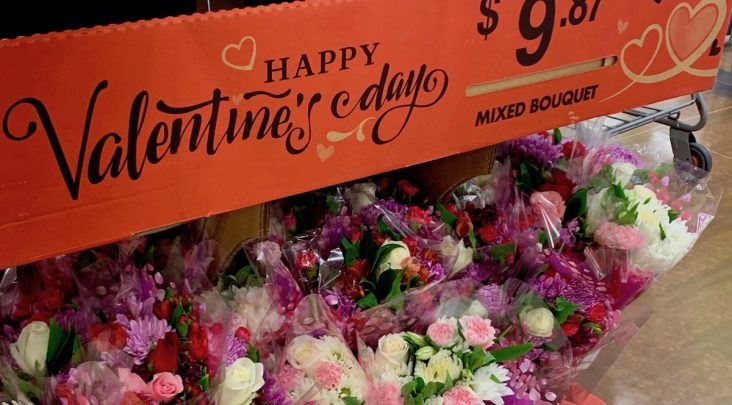Valentine’s Day spending expected to dip to $21.8 billion
by February 2, 2021 3:31 pm 1,097 views

Consumers are planning to spend this Valentine’s Day, but it won’t be on outings thanks to COVID-19. The National Retail Federation estimates total spending will be $21.8 billion, or $164.76 on average, down $32 from a year ago.
Roughly half of consumers (52%) plan to celebrate Valentine’s Day despite altering traditional celebrations.
“However, there remains a special significance around Valentine’s Day, and consumers are committed to celebrating friends and loved ones, even if that means having to alter those traditional holiday celebrations,” said Matthew Shay CEO of the NRF. “There is no question the pandemic has disrupted many aspects of Americans’ daily interactions and activities.”
The trade group’s annual survey conducted by Prosper Insights found 73% of consumers celebrating the holiday said it is important to do so as they look for some normalcy during the pandemic. A majority (74%) said the pandemic will directly impact their plans for the holiday. Just 24% said they plan to go out for dinner this year, which cuts $13 out of the average spending. Shay said the 24% going out is the lowest in the survey’s history. Around 41% said they plan to have a special dinner at home for the holiday.
Spending was also negatively impacted as more consumers continue to social distance, working and schooling from home. Spending on teachers and classmates is 25% lower this year to a $10.77 average. Spending on work colleagues fell by 34% to $8.47 on average. While overall spending is lower than the record 2020 levels, Phil Rist of Prospect Insights said consumers still feel it’s important to spoil their loved ones.
“Consumers still feel it’s important to spoil their loved ones in light of the pandemic. This year’s total and average spending figures are near record highs, as the second highest in the survey’s history,” he said.
The most popular Valentine’s Day shopping destination is online at 39%. Department stores will be where 29% said they plan to shop, followed by 28% who will shop at discount stores, and 17% who will shop at local small businesses.
A separate survey by WalletHub found men plan to spend more than women. At $231 on average, men plan to spend more than twice the $101 women plan to spend. WalletHub said its survey predicts Americans will spend $4.1 billion on jewelry, $2 billion on flowers and $2 billion on candy. WalletHub also found 50% of respondents were looking for love and said they would rather get shot by Cupid’s arrow than the COVID-19 vaccine. WalletHub also reported a 33% increase in online dating activity between Feb. 1 and Feb. 14.
Finder.com also recently surveyed consumers about Valentine’s spending and found 32.9 million Americans – or just 12.89% of the adult population – plan to buy a Valentine’s Day gift for more than one romantic partner. This is down from 26.77% the marketing group reported a year ago. Men were more likely to purchase gifts at 68% compared to 59% of women.
Also men were much more likely to buy Valentine’s gift for more than one partner. Gen Z (ages 20 and below) were the most likely to shop for multiple romantic partners with 22% saying they did so. This compared to 18% of Millennials (ages 39 and younger) and 20% of Generation X (between 40 and 56 years old) compared to just 2.9% of the Baby Boomer generation (ages 57 to 75).
While Valentine’s Day is an important holiday for retailers, it pales in comparison to Christmas holidays and Mother’s and Father’s Day which out rank it in spending. It is the third most expensive holiday for consumers, ahead of Easter and Halloween.
Jack Kleinhenz, NRF chief economist, said consumers continue to be caught in a push and pull environment over worries of COVID-19. He said consumers’ ability to spend over the past few months was boosted by stimulus and money they have saved by staying at home in 2020.
“Rising home values and stock prices also provided support for holiday spending while the availability of COVID-19 vaccines helped ease worries over the virus and state restrictions on activity. Nonetheless, millions of Americans remained out of work and others were working fewer hours,” he said.
